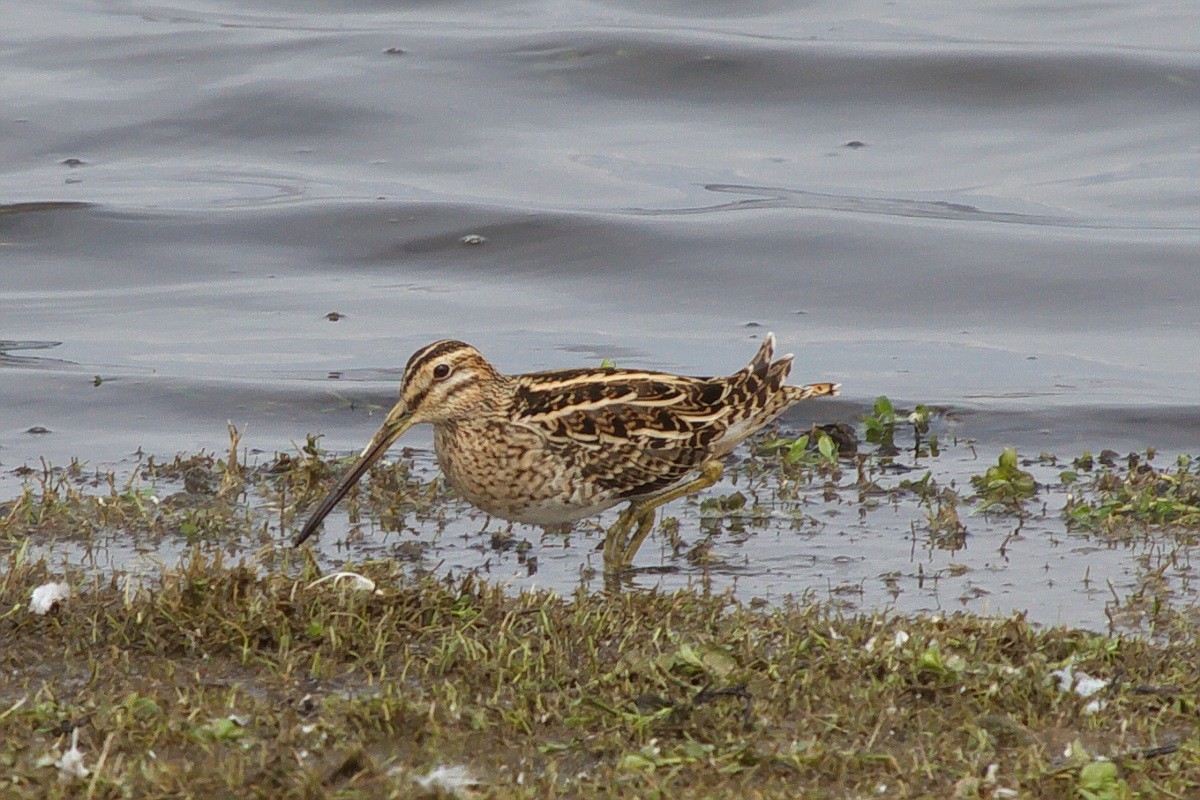Common Snipe
A species of Typical Snipes and Woodcock-snipes, Also known as Horse Gowk, Snite Scientific name : Gallinago gallinago Genus : Typical Snipes and Woodcock-snipes
Common Snipe, A species of Typical Snipes and Woodcock-snipes
Also known as:
Horse Gowk, Snite
Botanical name: Gallinago gallinago
Genus: Typical Snipes and Woodcock-snipes
Content
Description People often ask General Info
 Photo By Frebeck , used under CC-BY-SA-3.0 /Cropped and compressed from original
Photo By Frebeck , used under CC-BY-SA-3.0 /Cropped and compressed from original Description
Adults are 25–27 cm (9.8–10.6 in) in length with a 44–47 cm (17–19 in) wingspan and a weight of 80–140 g (2.8–4.9 oz) (up to 180 g (6.3 oz) pre-migration). They have short greenish-grey legs and a very long (5.5–7 cm (2.2–2.8 in)) straight dark bill. The body is mottled brown with straw-yellow stripes on top and pale underneath. They have a dark stripe through the eye, with light stripes above and below it. The wings are pointed. It is the most widespread of several similar snipes. It most closely resembles the Wilson's snipe (G. delicata) of North America, which was until recently considered to be a subspecies — G. g. delicata — of common snipe. They differ in the number of tail feathers, with seven pairs in G. gallinago and eight pairs in G. delicata; the North American species also has a slightly thinner white trailing edge to the wings (the white is mostly on the tips of the secondaries). Both species breed in the Aleutian Islands. It is also very similar to the pin-tailed snipe (G. stenura) and Swinhoe's snipe (G. megala) of eastern Asia; identification of these species there is complex. There are two subspecies of common snipe, G. g. faeroeensis in Iceland, the Faroes, Shetland and Orkney (wintering in Britain and Ireland), and G. g. gallinago in the rest of the Old World. The faeroeensis normally is more richly toned on the breast, its upperparts and the head than the gallinago. 
Size
27 cm
Colors
Brown
Gray
White
Life Expectancy
12 years
Nest Placement
Ground
Feeding Habits
Common Snipe are omnivorous, primarily consuming insects, terrestrial worms, and mollusks. They forage by probing soft soils using a sensitive, prehensile bill to detect and capture prey, often feeding at dawn and dusk. Their diet also includes seeds and grains, demonstrating a preference for varied nutrition.
Habitat
The common Snipe typically resides in wetlands with lush or tussocky vegetation, including the marshy edges of lakes and rivers. Its habitat spans vast regions with organic-rich, moist soils, from lower-altitude flooded tundra to northernmost taiga zones. During breeding, it prefers lower-altitude wetlands but also adapts to human-altered landscapes like sewage plants and rice fields.
Dite type
Insectivorous
People often ask
General Info
Feeding Habits
Bird food type
Species Status
Overall, the species is not threatened. Populations on the southern fringes of the breeding range in Europe are however declining with local extinction in some areas (notably in parts of England and Germany), mainly due to field drainage and agricultural intensification. The Agreement on the Conservation of African-Eurasian Migratory Waterbirds (AEWA) applies to the species. It is still hunted as a gamebird in much of its range. 